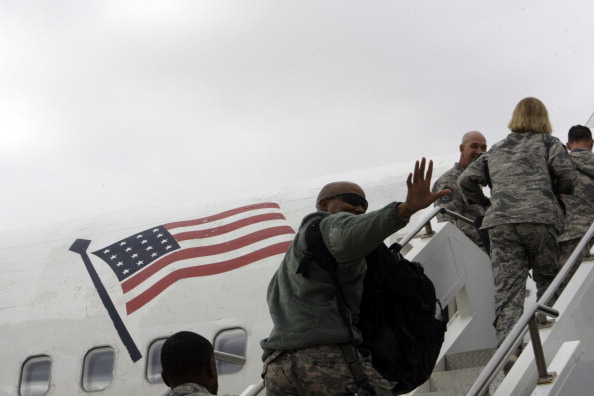
Last month, the Pentagon declared there were “no reports” of the Islamic State of Iraq and Greater Syria firing on U.S. troops stationed at Iraq’s huge al-Asad base. This month, the Pentagon acknowledged Monday, ISIS has been routinely lobbing “completely ineffective” rounds at the U.S. troops training Iraqi forces at the base north of Baghdad.
Who knows what next month will bring?
Firing crude rockets and mortar rounds is an inexact science, to be sure, but it’s basically like shooting at fish in a barrel. Yes, the fish are very small—and the barrel very big (the base is 25 square miles)—but no military force likes to be pinned down by mortar and rocket barrages. With every incoming round, the chances go up that someone on the base is going to be wounded, or worse.
This is President Obama’s dilemma: he has declared there will be no U.S. combat boots on the ground inside Iraq, yet he has dispatched American soldiers to a base with at least a smattering of enemy forces around it. If ISIS gets lucky—and wounds or kills U.S. troops—the political pressure on Obama to escalate will be intense.
Since Christmas, the U.S. and its allies have launched air strikes at ISIS targets near al Asad on five days, including a pair Monday that “struck two [ISIS] tactical units and destroyed three [ISIS] vehicles,” according to a Pentagon release.
But air power is a tough way to take out shoot-and-scoot mortar teams. It takes ISIS fighters only moments to set up and fire several rounds, before likely returning to dwellings shared with civilians, which U.S. policy bars attacking. Ground units, with the capability to gather intelligence before busting down doors and apprehending perpetrators, are a far more effective weapon against such attacks.
al Asad air base was the second-biggest U.S. base in Iraq during the 2003-11 Iraq war. About 100 miles west of Baghdad in Sunni-dominated Anbar province, the base sits on the Syrian Desert. About 320 U.S. troops are now there, earning hazardous-duty pay while training Iraq’s 7th Infantry Division to take on ISIS. There are just over 2,000 U.S. troops now in Iraq, and Obama has authorized the dispatch of 1,000 more.
There have been grim reports from the region in recent weeks. The BBC reported Dec. 19 that the base “has been encircled by militants from Islamic State (IS).” Four days later, Radio Free Europe/Radio Liberty, a branch of the U.S. government, reported that Iraqi military forces and tribal fighters, backed by U.S.-led air strikes, had thwarted an ISIS effort to overrun the base.
“al Asad air base has received some indirect fire in the last week or so, couple of weeks,” Rear Admiral John Kirby, the Pentagon press secretary, told CNN Monday. “It happens frequently, but it’s not like multiple attacks every single day.” The Pentagon, he says, calls it “unguided— it’s just random, sporadic, you might get one, one day, and three the next day. It’s done no damage, it has hurt nobody.”
While that may be true in a physical sense, there is a psychological cost that comes with being under persistent fire. It’s a signal that you’re vulnerable, and that your foes retain at least some initiative that could prove deadly for you or your comrades.
“It’s not too bad,” Marine Corporal Zak Taylor recently told NPR of his deployment to the base. “You kind of get used to everything.” He paused. “Not the rockets—that’s definitely one thing we’ll never get used to.”

More Must-Reads From TIME
- The 100 Most Influential People of 2024
- Coco Gauff Is Playing for Herself Now
- Scenes From Pro-Palestinian Encampments Across U.S. Universities
- 6 Compliments That Land Every Time
- If You're Dating Right Now , You're Brave: Column
- The AI That Could Heal a Divided Internet
- Fallout Is a Brilliant Model for the Future of Video Game Adaptations
- Want Weekly Recs on What to Watch, Read, and More? Sign Up for Worth Your Time
Contact us at letters@time.com